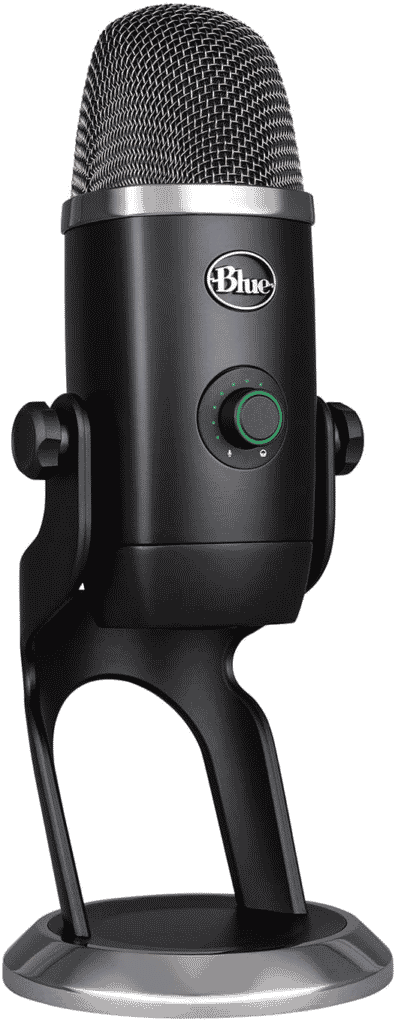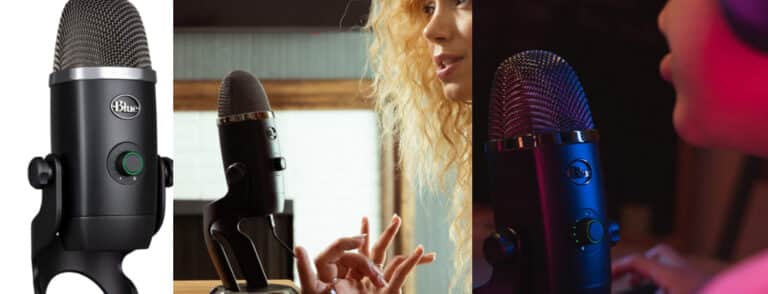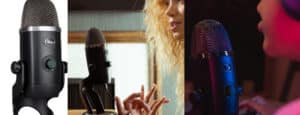You’ve probably heard of Blue when it comes to audio recording equipment. With over 25 years of experience, the company makes a wide variety of high-quality microphones for podcasters, content producers, and streamers of various sizes. The Blue Yeti X USB microphone the range’s flagship product offers excellent audio capture and cutting-edge software. You’ll undoubtedly recognize it from many of your favorite streamer videos because Twitch and YouTube stars love it so much. Does it offer enough to entice aspiring podcasters and streamers given its high price? Yes, but it depends on what you hope to gain from it.
What you will see here!
Pricing

The Blue Yeti X is a competent USB microphone perfect for podcasting, streaming, and pretty much anything else involving audio for which you’ll need a microphone, but that capability comes at a premium price. The Yeti X costs £137.05/$134.53 for the normal version and £189.99/$199.99 for those who want the World of Warcraft Edition. Whilst the Yeti Nano is targeted toward the low-cost market.
That’s significantly pricier than products like the Trust Gaming Fyru and HyperX SoloCast. So be careful to employ the additional recording modes and software capabilities that are exclusive to the Yeti X, or you might be able to save some money. Look at the top mics for streaming and podcasting to discover how it stacks up against the competition.
If interested, you can get it directly from Blue as well as online merchants like
Sound quality

Behind the gleaming metallic microphone, the mesh is a four-capsule condenser array, up from the original’s three and significantly more than the Yeti Nano’s two. This effectively means that the Blue Yeti X records sound admirable.
During many Fast Charge live streams, when You record audio using Audacity and use the Blue Yeti X as a microphone. Your voice is loud, clear, and crisp, and the presets are offered by the VO!CE software for PC further improves this. It’s a delight for Discord multiplayer friends as well; several of them commented on how crystal-clear my microphone sounded during sessions of Call of Duty: Warzone and No Man’s Sky.
It picks up a lot of background noise. It includes the click-clack of the keyboard and mouse and occasionally even the fan noise from my gaming laptop. If anything, it’s a bit too excellent. Of course, this can be reduced by using the proper recording technique and the advanced features of the VO!CE software. It won’t work perfectly for all settings right out of the box.
Design and features

The Blue Yeti X USB Microphone is the sleeker, more upscale replacement for the Yeti. A layer of shiny silver covers the microphone grille and base of the new attachment. It gives a sleek two-tone appearance. However, the instant you put in Blue’s new microphone and notice the device light up with a flurry of LED dots surrounding its volume knob, it really distinguishes itself from its predecessor.
One of the main improvements of the Yeti X is its programmable LED lights. It enables the microphone to offer an 11-dot volume meter, which allows you to see how loud you’re speaking.
The four recording modes on the Yeti X are identical to those on the original. For solo podcasts and streams, cardioid mode records sound directly in front of the mic; omnidirectional mode records sound all around the mic; bi-directional mode records sound from the front and rear, and stereo mode records sound on the left and right channels. Bi-directional mode music sounds from the front-rear for two-person podcasts.
What has changed is that the rear-facing recording mode knob on the prior Yeti has been changed to a single button that employs LED indicators to show you which mode you are currently in. Since gain may now be adjusted from the front. The Yeti X also does away with the rear-facing gain control knob seen on the Yeti.
Logitech G Hub and Blue VoiceÂ

One of the greatest selling features of the Yeti X is that every aspect of it can be altered using Logitech’s G Hub software. The microphone’s voice modes and sound quality to its array of LED lights.
With the help of G Hub, you may tinker with Blue’s VO!CE program. This enables a number of vocals present as well as the option to create your own by modifying the low, medium, and high frequencies.
Your voice sounded noticeably louder and fuller after switching on Blue VO!CE’s default Broadcaster preset. The AM Radio preset added a cool, purposely produced sound that made my speech sound like it was coming from an old car stereo. The Classic Radio Voice preset gave my voice a sharp, higher-pitched urgency.
Additionally, G Hub enables you to customize each and every LED light on the Blue Yeti X. It includes the ring surrounding the mute button and the distinct colors for low, medium, and high volumes in the real-time volume meter.
Most of these settings are pleasant small aesthetic extras. The option to color-label each recording mode is more practical because it makes it simpler to quickly determine which mode is on.
A complete equalization for altering the sound of whatever headphones you have attached to the Yeti X is another wonderful feature offered by the G Hub software. You can adjust each sound band separately or activate presets like Cinematic, First Person Shooter, Bass Boost, and Multiplayer Online Battle Arena.
Performance

With a frequency range of 20Hz to 20kHz, the Blue Yeti X can record audio at up to 48kHz/24-bit quality. This frequency range also applies to the integrated headphone amplifier.  This is made simple by the LED metering. It’s crucial to rely on your hearing rather than your eyes because it’s possible to overwhelm the mic’s capsules. Nevertheless, a crisp, clear signal was simple enough in all four patterns.
The Yeti X often sounds fuller—more mids, more lows, and more crisp high-mids—than a DSP mic like the Shure MV51. But depending on whether you use the MV51 in flat mode or one of the DSP presets. It can sound very different. In flat mode, it loses some of the low-mid presence that the Yeti X can capture. So, the Yeti X may have a tendency to produce richer-sounding vocals—at least before EQ is applied—but that richness is balanced by exceptional high-mid and high-frequency clarity and detail.
Here, variety is added by the numerous mic patterns. The Omni pattern is an excellent approach to capture background noise in addition to your main sound source. The figure-8 pattern can be a great way to record two facing each other. It’s impressive that the microphone can record in stereo as well. The Yeti X is a fantastic tool for capturing ambient/room sounds, background audio for podcasts, as well as stereo recordings of musical instruments or groups.
Therefore, one of the purposes of the BlueVoice software is to provide customers with a feature equivalent to DSP without incorporating it into the microphone itself. It allows Blue to maintain its no-DSP heritage while yet offering to record presets.
In what ways is the Blue Yeti X superior?
Blue received praise from critics when it unveiled the Yeti X in 2020 since the update gives its best-selling predecessor’s features a small boost. The digital audio resolution of the Yeti X is increased from 16-bit/48kHz to 24-bit/48kHz.
Are Blue Yeti mics worth it?
Absolutely worth it is the Blue Yeti. It is excellent for streaming, recording, gaming, and podcasting because it has three capsules and four polar patterns. Not to add that Blue, one of the greatest microphone manufacturers in the business, manufactured it.
How close should you be to a Blue Yeti?
Simply set your microphone on your desktop, between 6 and 12 inches away, if you have a desktop microphone stand like the one that comes with the Blue Yeti. Remembering to hang loosely is an easy method to make sure you always set your microphone at the right distance.
Conclusion
The Blue Yeti X should be at the top of your list if you’re looking for a high-end USB microphone for podcasting, streaming, or content creation. It sounds amazing right out of the box, and the Blue Voice program has a tonne of sophisticated tools for fine-tuning things. The integrated LED lights offer some cool customization possibilities and are really helpful for keeping track of your volume levels.
Existing Yeti owners should only think about upgrading if they are drawn in by the new software and LED customization as the $134.53 Yeti X is largely comparable to its original in terms of raw sound quality. However, the Yeti X is among the best USB microphones available if you haven’t yet purchased one for your gaming or productivity setup.
Read More:
- Top 6 Microphones for streaming Nintendo switch in 2025!
- LG X Boom 360 review: Combining Sound and Lighting!
- Apple Podcasts- A complete guide for everything you need to know!
- All you need to know about iOS 14.6 – What’s new to consider?
- Best Internet Radios to gear up your listening sessions!
















